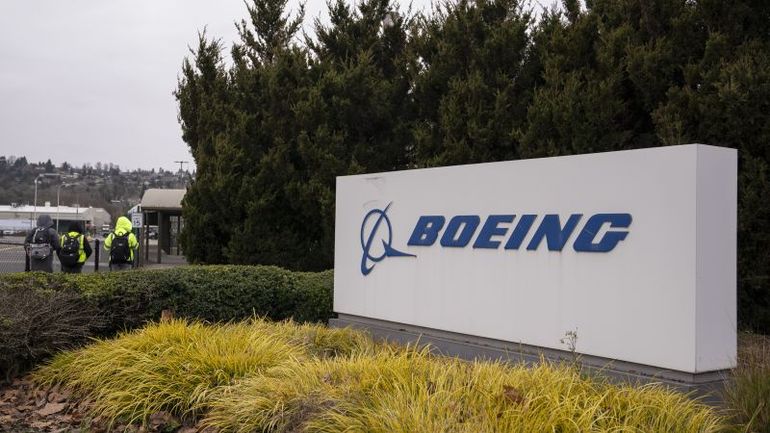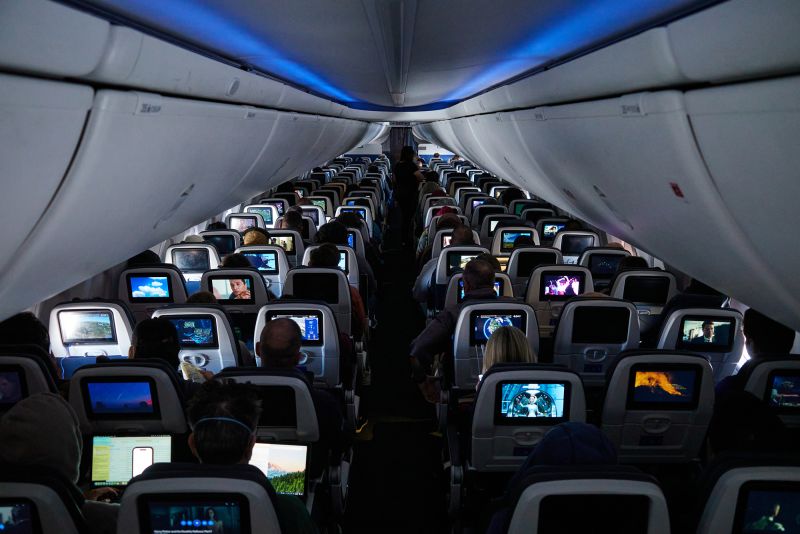
Boeing is facing even more trouble this week as it sinks further into crisis. Despite a rough start to 2024, things got worse when the company was accused of ignoring a whistleblower's concerns about serious issues with the manufacturing process of its 787 Dreamliner planes. The whistleblower also stated that Boeing retaliated against him by assigning him to the 777 unit as a form of punishment, where he discovered further production problems.
Boeing insists that the allegations are false and remains confident in the safety of its aircraft. However, the US Federal Aviation Administration (FAA) has announced plans to conduct an investigation, adding to the numerous federal probes into the troubled company, including a criminal inquiry. Additionally, a Senate subcommittee is scheduled to review the whistleblower's case next week, potentially revealing more negative information about Boeing.
The emergence of more claims regarding inadequate safety measures is the last thing that Boeing and the public need at this time. The whistleblower complaint is further tarnishing Boeing's already damaged reputation: a company with a history of safety issues, led by executives who prioritize profit over quality control.
Yet the bad news for Boeing apparently knows no end.
The whistleblower’s accusations
Sam Salehpour, a Boeing engineer, raised concerns that Boeing may have cut corners during the manufacturing of its 777 and 787 Dreamliner jets. These shortcuts, according to Salehpour, involved skipping important safety measures that could potentially result in serious issues as the airplanes get older. The alleged shortcuts could significantly decrease the expected lifespan of these planes, which are designed to be in service for up to 50 years. The New York Times was the first to report Salehpour's claims.
In January, Salehpour officially lodged a complaint with the FAA, which was later made public on Tuesday. This complaint was not entirely new, as the FAA had already looked into Boeing's 787 production practices and even paused 787 deliveries. However, Salehpour's complaint highlighted a new aspect of the issue. He pointed out that assembly crews working on the 787 Dreamliner failed to properly fill small gaps when connecting different parts of the fuselage for around 1,000 planes. This oversight could put additional strain on the planes' joints, making it challenging to detect during inspections, Salehpour explained.
In this March 14, 2019, file photo, a worker walks next to a Boeing 737 MAX 8 airplane parked at Boeing Field in Seattle. Boeing said Thursday, July 18, it will take a $4.9 billion charge to cover possible compensation to airlines whose Max jets remain grounded after two deadly accidents.
Boeing announced on July 18 that it will incur a $4.9 billion charge to potentially compensate airlines affected by the grounding of its 737 MAX 8 airplanes. In a file photo from March 14, 2019, a worker is seen walking next to a Boeing 737 MAX 8 plane parked at Boeing Field in Seattle.
Ted S. Warren/AP
Related article
Boeing's Timeline: A Look at the Air Giant's Recent Turbulent Journey
He claimed that Boeing was aware of the mistakes in the process and even supported them to help with the 787 assembly delays.
Boeing has reassured that the 787 is safe for flying. The FAA conducted a thorough review of Boeing's manufacturing processes before pausing deliveries of the model. After addressing the concerns raised by Salehpour, the FAA approved the planes for delivery to airlines in March 2023.
In response to the doubts raised, Boeing stated that the claims regarding the structural integrity of the 787 are inaccurate. The company emphasized that they have taken extensive measures to ensure the quality and long-term safety of the aircraft.
Salehpour discovered subpar work at the 777 unit, where crews were misaligning body pieces. Boeing was pressuring engineers to approve work that had not been inspected yet.
Boeing responded to Salehpour's claims by stating, "We are fully confident in the safety and durability of the 777 family." They also mentioned that the claims made by Salehpour were inaccurate.
How Boeing got here
The latest accusations are pouring gasoline on a dumpster fire.
Boeing's safety reputation took a hit after its merger with McDonnell Douglas in 1997, leading to two fatal crashes of the 737 Max in 2018 and 2019. The company admitted responsibility for the crashes, attributing them to a design flaw that has now been corrected after a lengthy grounding.
The string of negative events continued at the end of 2023, when an airline identified a possible issue with a critical component on two 737 Max planes.
During the first weekend of 2024, a part of an Alaska Airlines 737 Max broke off the side of the plane just after take-off. This incident put Boeing in crisis mode. A preliminary investigation by the National Transportation Safety Board found that Boeing likely forgot to put in the bolts in the door plug, which are meant to prevent such parts from detaching. Boeing has not directly addressed the accusations in the federal report, but CEO Dave Calhoun did admit that the company made a mistake and emphasized that Boeing takes full responsibility.
As a result of this incident, certain 737 Max jets were temporarily grounded nationwide. This led to congressional hearings, delays in production and delivery, as well as several federal investigations, including a criminal probe. In addition, Boeing's stock dropped by about 30% this year, causing the company's market valuation to decrease by nearly $50 billion.
The bad news continued with pilots on a United Airlines 737 Max reporting jammed flight controls during landing in Newark, New Jersey in February. Additionally, the FAA raised concerns about safety issues with de-icing equipment on 737 Max and 787 Dreamliner models that could lead to engine thrust loss last month. Despite this, both planes are still permitted to fly as Boeing stated the problems do not pose an immediate safety threat.
However, after examining Boeing's production practices, FAA Administrator Mike Whitaker discovered significant issues with the company's manufacturing and assembly line. As a result, Boeing has been given until late May to develop a plan to address these production problems.
Boeing said it is working on several of the issues Whitaker identified.
What’s next for Boeing
Boeing is facing significant consequences as top executives are being let go, such as the head of commercial jets and a long-serving leader of the 737 Max unit. CEO Dave Calhoun, who earned $32.8 million last year, will also be stepping down before the year ends and is slated to receive $45 million for retirement.
The repercussions for Boeing are severe as airlines have halted orders for their planes since January. The only orders for the 737 Max last month were for the non-operational Max 10 model due to de-icing issues. The company may face substantial fines and lawsuits, having already compensated Alaska Airlines over $150 million for grounding its planes temporarily after a door plug blowout.
Passengers were on a Boeing 737 Max-8 plane for a United Airlines flight that took off from Newark Liberty International Airport (EWR) in Newark, New Jersey, US, on Wednesday, March 13, 2024. The TSA predicts that travel volumes during the busy spring break season will be almost 6% higher than in 2023. 
Bing Guan/Bloomberg/Getty Images
Related article
How the crisis at Boeing could make your next vacation more expensive
The company hasn’t turned a profit in years, and the Alaska Airlines incident won’t help Boeing make money this year either.
Boeing may not be facing an existential threat as it only has one major competitor in global commercial aircraft production - Airbus. This lack of options for airlines to switch between manufacturers makes Boeing somewhat immune to typical market pressures, such as passengers choosing a different manufacturer. While some evidence suggests that nervous or upset flyers may prefer Airbus flights, it may not always be practical or feasible depending on their destination.
However, Boeing is facing increasing dissatisfaction from its shareholders, regulators, and customers. The company is ultimately accountable to them, and its already damaged reputation will make it challenging to regain the trust of airlines, let alone the confidence of bewildered regulators. The continuous stream of negative news further complicates any potential turnaround for Boeing.
Boeing's future top executives have a challenging road ahead with new leadership coming in. The world will be watching closely as they take on their roles. CNN's Gregory Wallace and Gabe Cohen helped with this report.
Editor's P/S:
Boeing's ongoing crisis deepens with the recent whistleblower accusations and the FAA's subsequent investigation. The company's reputation, already tarnished by previous safety issues, is further eroded. The whistleblower's claims of inadequate safety measures in the manufacturing of the 777 and 787 Dreamliner jets, including shortcuts and skipped inspections, raise serious concerns about the long-term safety of these aircraft. Boeing's insistence on the safety of its planes and its refutation of the allegations ring hollow amidst the mounting evidence to the contrary.
The crisis has led to severe consequences for Boeing, including grounded aircraft, canceled orders, plummeting stock value, and ongoing federal investigations. The company's leadership is under fire, with top executives facing replacement. Boeing's future is uncertain as it grapples with the consequences of its past actions and the challenges of restoring trust and confidence in its products. The company's ability to regain its position as a leader in the aviation industry remains in doubt, and the industry and the public alike await the outcome of the ongoing investigations and the company's efforts to address the systemic issues that have led to this crisis.














